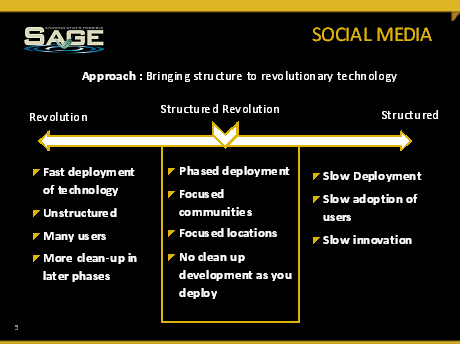In the wake of the transoceanic disaster that happened recently, Apache Corp.’s Drilling Adviser Randy Wagner talked about how it’s imperative that drilling companies don’t make mistakes. In a webinar on the adoption of enterprise social, Randy explained how enterprise social networking “has come at exactly the right time to get in there to make sure we know what’s going on with folks around the world and cut that 25% trouble cost.”
Out of the $2.8 billion Apache spends annually to drill and complete wells, 25% is spent on trouble costs. At the same time, Apache has 4,000 employees with the knowledge to prevent trouble costs. Apache needed a technical solution featuring organized social streams at its core for employees to share information. Randy explained what his organization was looking for in an enterprise social networking tool:
- Available Anywhere on Any Device, i.e. “works extremely well with native apps,” especially because many of their employees use mobile devices to communicate out in the field.
- Subject-based Collaboration, for “discovering expertise in our company;”
- Enterprise Ready, meaning “easy to implement” either in the cloud or behind our firewall
“Before you had to go to those portals, you had to go to those discussion sites; you didn’t have a way to work it into your natural work form,” Randy said. “tibbr is complimentary. It’s bringing the [information] that you want to see to you earlier.”
For deploying Apache came up with the idea of a “Structured Revolution:” a delicate balance between a slow structured deployment and a fast structured deployment. See the following chart:

Apache rolled tibbr out in phases to various teams and drilling communities based on locations. Furthermore, they let the community create subjects and discover their own ways of using the tool before managing and reorganizing the content structure. This approach allowed for a contrarian culture of information sharing.
To their surprise, they found that tibbr appealed to its aging workforce because it was easy to use, integrated with Microsoft SharePoint and provided a way to surface valuable content, even from mobile devices, which is critical for employees communicating from drilling sites.





